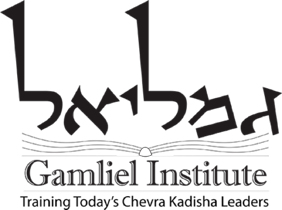Jewish Death and Burial – An Overview
By Susan Esther Barnes
Death is inevitable. All of us have had or will have friends and relatives who will die, and, some day, each of us will face our own death. Jewish tradition considers the transition from life to death to be a holy, if difficult, time for the dying person and his/her loved ones. Over the centuries, many traditions and practices have developed to guide us from the realm of death back to the realm of the living. Below is a brief overview of this process.
Delaying the End of Life
Jewish tradition considers human life to be of great importance. Most Jewish laws can be broken in order to save a human life, and, in general, it is desirable to prolong life. However, if a person is suffering, heroic measures need not be taken to prolong that person’s life.
Prayers for the End of Life
When a person believes he or she is approaching death, there are two prayers which are traditionally said. The first is the Vidui, which acknowledges that life and death are in the hands of God, and is a last confession. Many variations of this prayer can be found by doing a web search. It can be said even if a person is not sure whether they are dying or when death is not imminent. The second prayer is the Shema, a central prayer found in every Jewish service. Tradition holds that this prayer should be the last one a person utters before he or she dies.
What to Do Immediately After Someone Dies
When a person dies, his or her eyes should be closed. Some people open a window for the soul to depart. The chevra kadisha should be contacted as soon as possible, so shmirah and taharah can be arranged (see below).
What to Say When Someone Dies
Many excellent articles have been written about what to say when a person dies. It is a good idea to review some of these articles before the need arises. Below are two traditional Jewish things to say immediately upon learning about someone’s death:
- Baruch dayan ha’emet – Blessed is the judge of truth
- HaMakom yinachem etchem b’toch sh’ar aveilei Tzion Vi’rushalayim – May God comfort you among the mourners of Zion and Jerusalem
Chevra Kadisha
The chevra kadisha, or “holy society,” is the group of people who perform shmirah and taharah, and may perform other functions to help the family through the mourning process. The focus of the chevra kadisha is to treat the dead person with kavod (honor) and to comfort the mourners.
Shmirah
In Jewish tradition, the dead person is never left alone between the time of death and burial. Shmirah, from the Hebrew word “to keep” or “to guard,” is the practice of staying with the dead body during this time. Traditionally, the person who performs Shmirah will read Psalms out loud. Shmirah continues 24 hours a day, before and after Taharah, until the person is taken to the gravesite.
Taharah
Taharah is the practice of preparing the person for burial, and is traditionally done by members of the chevra kadisha. Taharah includes the following steps:
- Washing the body
- Recital of prayers throughout the process
- Pouring the ritual taharah water over the body (or immersing the body in water)
- Dressing the body in traditional white cotton or linen garments called tachrichim
- Placing the body in a plain wooden casket
- An apology in case any offense has been taken by the dead person during the process due to an omission or the commission of an offense
Burial vs. Cremation
Jewish tradition calls for burial of the dead. In some communities, but not all, cremation may be practiced, but it is usually not considered traditiona. Consult with your clergy and/or local chevra kadisha to determine what services are available in the case of a cremation.
Funeral/Memorial Service
A memorial service may be held in a synagogue, the chapel at a funeral home, or another location shortly before the burial. A funeral service is usually held at the gravesite immediately before burial when there is not a memorial service immediately preceding it. Jewish funerals are often conducted by clergy members, but they can be conducted by a lay person. They are usually less than one hour in length, and may include the recitation of Psalms and/or other readings, a eulogy by clergy, family members and/or friends, and the recitation of the Mourner’s Kaddish.
Immediately following the service, the coffin is buried. Traditionally, the immediate family members will throw the first handfuls or shovelfuls of dirt on the coffin after it is lowered into the grave. In some communities, the family (and perhaps some of their friends) will stay until the grave is completely filled in, or they may fill it in themselves.
It is traditional to wash one’s hands upon leaving a cemetery.
Seudat Havraah – Meal of Consolation
The Jewish community recognizes that even those in mourning need to eat, but they may have difficulty thinking about mundane tasks such as grocery shopping and cooking. Therefore, tradition holds the community responsible for providing food for the mourners. After the burial, the mourners return home, where the community traditionally will have prepared for them a meal of consolation.
Shiva
The word Shiva means “seven,” and refers to the first seven days of mourning, beginning with the day of burial. There are various traditions regarding what a mourner does during this time. Generally, the mourner will refrain from working during this week, and will remain at home. Traditionally, the community is responsible for bringing food to the mourner, and for visiting the house of mourning during this time. There may be a shiva service – a memorial service – at the mourner’s house each day of shiva, from one to three times a day. On the seventh day, in some communities, the mourner will get up and walk around the neighborhood as a sign that shiva has ended.
Shloshim
Shloshim, which means “thirty,” is the 30 days after the time of burial. Many of the restrictions of shiva are lifted (for instance, the mourner may return to work), but in traditional communities some restrictions continue. For instance, some people may not cut their hair from the time their loved one has died until the first Yarzheit. Traditionally, the mourning period ends after 30 days for all people except for one’s parents. However, in many communities, this is not considered to be the end of mourning for other relatives or even close friends.
The Mourner’s Kaddish
The Mourner’s Kaddish is a prayer praising God which is said at the gravesite, and which is traditionally recited daily as part of a minyan (group of ten Jews) throughout the mourning period. In some communities, this may be just through Shloshim as noted above, or it may be for 11 or 12 months after the death. The Mourner’s Kaddish is then recited once a year on the anniversary of the person’s death, called the yarzheit, and may also be said during the annual days of remembrance on the Jewish calendar.
A Note About Mourning
I have tried here to give only a brief overview of Jewish death and burial practices. A whole book could be written about each of the sections above, covering the depth and breadth of Jewish practice, both past and present. In addition, it is important to remember that, as humans, different people experience mourning differently, and we each experience each person’s death differently from any other death we have encountered. Don’t be surprised if your mourning experience, or that of others, does not fit neatly into the definitions of shiva, shloshim, and so forth. As a mourner, remember your main job is simply to honor the person who has died, while taking care of yourself, as one of the living.

